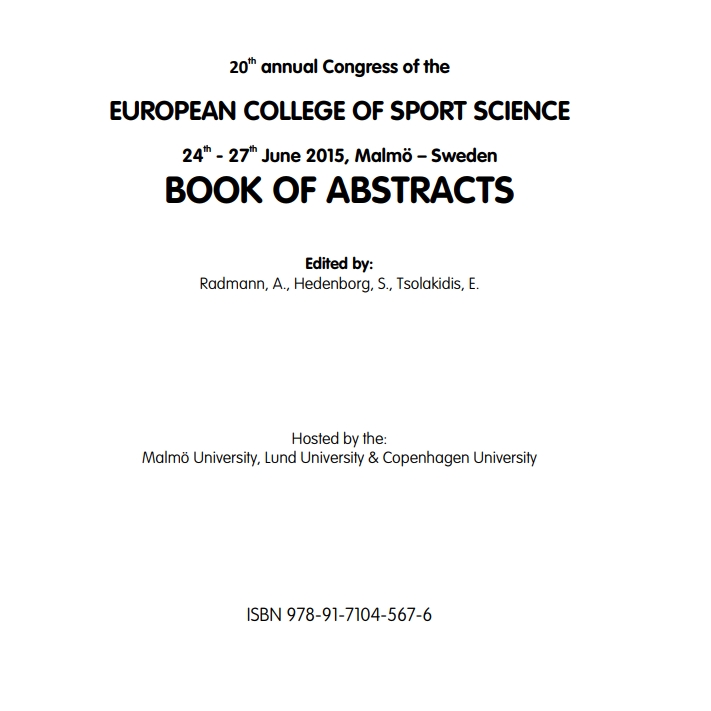Bosio A1, Ferioli D1, Induni M 1, Morelli A1, Martin DT2, Menaspà P2 3, Fell J4 , Rampinini E1
1, Mapei Sport Olgiate Olona, Italy; 2,AIS Canberra, Australia; 3, ECU Perth, Australia; 4 ,UTAS Tasmania, Australia

INTRODUCTION The warm-up characteristics can influence cycling time trial (TT) performance (Christensen and Bangsbo, 2014; Bishop, 2003). When compared to concentric (CON), eccentric (ECC) exercises are associated with a lower cardiovascular response for a given muscular strain. Therefore, the aim of this study was to test the effect of an ECC cycling warm-up compared to a conventional warm-up on cycling TT. METHODS After 6 weeks of familiarization to ECC cycling, 8 amateur cyclists performed a 5 Km TT on 2 separate days preceded by ECC or CON warm-up. ECC consisted of four 2-min bouts alternating low to high intensity ECC cycling (40% and 120% of aerobic PPO) on a custom-built ergometer preceded and followed by 6-min conventional cycling at 100W. CON consisted in 5-min light cycling followed by an 8-min ramped protocol progressively building intensity up to above the anaerobic threshold. Neuromuscular function (MVC and VA), lactate (La), creatine kinase (CK), pH, bicarbonate, heart rate (HR), RPE and muscle pain (MP) were quantified during the warm-ups. Power Output (PO), Cadence (CAD), HR and RPE were monitored during the TTs. RESULTS CK and pH were similar in the 2 conditions, bicarbonate was lower and La was higher after CON compared to ECC. HR and RPE were lower after the ECC warm-up (115±12 bpm and 2.8±0.3 au) compared to CON (141±11 bpm and 3.9±1.2 au). MP was similar in the 2 conditions (with a likely peak at the end of TT). TT performance (471±27 and 466±23 s for ECC and CON respectively) was not statistically different (p=0.112). RPE and HR increased similarly in the 2 conditions during the TT (p<0.001). Pacing, as reflected by PO distribution, was negative (start hard, end easy); in spite of a significant interaction (p=0.037) differences between conditions at the 500 and 2000 m mark were subtle. CAD was similar in the 2 conditions. MVC did not change during the entire duration of the experiment, while VA was on average lower during CON (p<0.05). DISCUSSION It is likely that ECC cycling, as a form of warm-up, has the potential to be a viable alternative to conventional warm-up. In fact, ECC elicited lower cardio-circulatory, metabolic and perceptual strains than CON without compromising subsequent TT performance. Furthermore, some evidence suggests that ECC might prevent the onset of central fatigue despite the very high level of forces sustained during ECC compared to conventional cycling. Further research is required to understand the influence of ECC on pacing strategies. REFERENCES Christensen PM, Bangsbo J.(2014). Int J Sports Physiol Perform, [Epub ahead of print] Bishop D. (2003). Sports Med, 33(7), 483-98
20th Annual Congress of the European College of Sport Science (ECSS). Malmö 24-27th June,2015